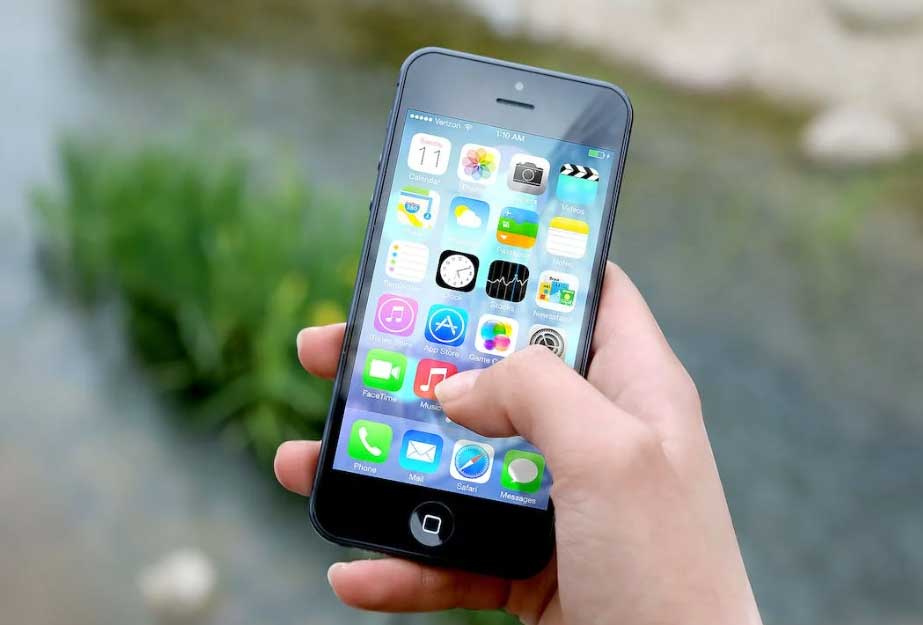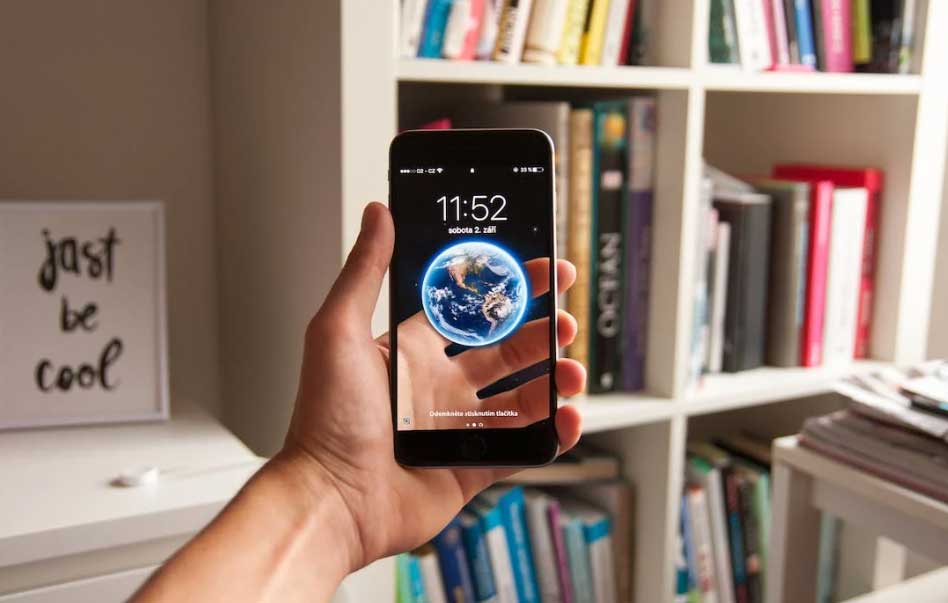Picture this: you have an iPhone that was previously used by someone else. Now, you want to use it for yourself, but there’s a hitch – the old iCloud account details still linger. What’s more, you don’t have the old iCloud password. Sound familiar? You’re not alone. Many people find themselves in this situation. But we’ve got the solutions you need to overcome this common problem.
Before diving into the specifics of how to sign out of iCloud without a password, there are some key considerations you need to be aware of. These revolve primarily around the “Find My iPhone” feature and the importance of your iPhone passcode. Additionally, safeguarding your data is also crucial.
“Find My iPhone’s” Significance in Signing Out of iCloud
One of the cornerstones of Apple’s security infrastructure is the “Find My iPhone” feature. This versatile tool not only assists in the location of misplaced devices but also serves as a guard against unauthorized access.
Whenever you engage “Find My iPhone” on your device, it necessitates the Apple ID password associated with the account for iCloud sign-out procedures. This built-in safeguard ensures that only the rightful account owner can execute such crucial changes.

In contrast, when “Find My iPhone” is deactivated, no password is needed to sign out of iCloud. That means anyone can do it. This underlines the sheer importance of this feature in preserving device security.
If you’re preparing to pass your device onto someone else, it is prudent to disable “Find My iPhone” – but only after you’ve taken ample measures to protect your personal data and uphold your privacy.
The Essential Role of Your iPhone Passcode
Your iPhone passcode plays a critical role, too, especially when it comes to interactions with iCloud accounts. Following the sign-out from an iCloud account, your device may request your iPhone passcode. As such, it’s vital that this passcode remains fresh in your memory or securely noted down elsewhere.
Prioritizing Data Protection
Deletion of an iCloud account could result in the loss of data stored on your iPhone, including photos, messages, and contacts. Therefore, it is strongly advised to back up all significant data prior to initiating the sign-out procedure.
Whether you opt for iTunes, iCloud, or a third-party backup solution, creating a backup ensures that your data is secure and can be retrieved if anything goes wrong during the sign-out process.
“Find My iPhone,” your iPhone passcode, and the safeguarding of your data are three key factors to consider before proceeding with an iCloud sign-out without a password. Bearing these elements in mind will guide you in safely signing out of iCloud, thereby preserving your data’s integrity and your device’s security.

Sign Out by Erasing the iPhone
An effective method of signing out of iCloud without a password involves remotely erasing your iPhone with the assistance of the original owner. This method avoids the need for password sharing and physical device handover. The following are the steps to carry this out:
1. Access iCloud.com
The original owner should log in to iCloud.com using their Apple ID/password currently associated with the iPhone in question.
2. Navigate to “Find My iPhone”
After logging in, the owner should click on “Find My iPhone,” subsequently entering their password to access the “Find My iPhone” interface.
3. Initiate iPhone Erasure
By clicking on “All Devices” at the top part of the page, select the corresponding iPhone from the list. Following this, they need to click “Erase iPhone” in the panel that appears in the top right corner. This action triggers a device restart and wipes all data – that includes the account details for iCloud.
4. Remove Account
After erasing the iPhone, you need to go to the “Find My iPhone” page and select “Remove from Account” below the device name. This will completely disconnect the iCloud account from the iPhone and allow the user to sign in with another Apple ID.
Please be aware that if you do not complete the “Remove from Account” action, the iPhone will continue to be linked to the original Apple ID. This will result in the inability to activate and utilize the iPhone without the prior Apple ID/password.

Signing Out Using Third-Party Tools
In instances where reaching out to the original Apple ID owner is not feasible, a couple of third-party tools from iSumsoft can be employed. The first one is iPhone Passcode Refixer (iOS 11.3 or older) and iLock Refixer (iOS 11 through 15). Both tools have been shown to be effective. Let’s look at the Passcode Refixer first:
1. Software Installation
First, download Passcode Refixer and install it on your computer. When ready, start the software.
2. iPhone Connection
Next, connect your iPhone to your computer via USB and unlock it to get to its Home screen. You might be prompted to trust the computer. If so, choose “Trust.”
3. Apple ID Removal
Within the software interface, opt for “Remove Apple ID.” On the following page, click “Start.”
4. Complete Settings Reset
On your iPhone, tap on the following options in this order:
- Settings
- General
- Reset
- Reset All Settings
Upon the completion of the reset, Passcode Refixer will work its magic and remove the iPhone’s current iCloud account. No password is needed to complete this step.
5. Confirmation
After seeing the success prompt on your screen, your iPhone will sign out of iCloud. From here, you can easily use a new Apple ID and proceed to set up an iCloud account without encountering any problems.

Using iLock Refixer
For iPhones running on iOS 11 or later, iLock Refixer serves as an ideal tool. After you download the software and install it on your computer, proceed with the following steps:
1. Jailbreak the iPhone
First, your iPhone needs to be jailbroken. Once done, disable the network. Alternatively, if you prefer not to jailbreak, you can achieve the same result by rebooting your iPhone after successfully logging out of iCloud.
2. iPhone-Computer Connection
Connect your iPhone to your computer via a USB cable. If you encounter a “Trust This Computer” notification, select “Trust.”
3. “Find My iPhone” Disabling
From your computer, launch iLock Refixer and choose “Turn Off FMI.”
4. Process Initiation
Click “Start” on the following page. The iLock Refixer software will now start deactivating “Find My iPhone” for you.
5. “Find My iPhone” Status Verification
To ensure the security of your iPhone, the software will ask you to verify the “Find My iPhone” status. This process involves visiting a designated website and checking the status by entering either your iPhone’s serial number or IMEI.
To start the iCloud sign-out process on your iPhone without a password, make sure that “Find My iPhone” is turned off. You can confirm this by checking the online query result. Once confirmed, select “OFF” from the drop-down menu and click “Confirm.” This will erase all data on your iPhone.
6. Confirmation
After a success message appears on the software, it is confirmed that your iPhone has been signed out of iCloud. You can now proceed to sign in to iCloud using a different Apple ID.

Signing Out via iPhone Restoration
If you want to delete your iCloud account without a password, restoring your iPhone to its original settings is an option. But keep in mind that if you don’t sign out of iCloud before restoring your phone, the Activation Lock will require the previous Apple ID and password.
To resolve the issue of accessing your iPhone with two-factor authentication enabled, simply ensure you have the passcode to unlock it and the linked Apple ID. Follow these step-by-step instructions to resolve the issue:
1. iPhone-Computer Connection
Start by connecting your iPhone to your PC with iTunes open.
2. Activation of Recovery Mode
Then, initiate your iPhone’s recovery mode. You can easily do this by quickly pressing and releasing volume up, followed by quickly pressing and releasing volume down. The last step is to press and hold the iPhone’s side button.
3. iPhone Restoration
When recovery mode is activated, iTunes will notify you about an issue with your iPhone that needs an update or restoration. You can opt for the “Restore” option and then proceed with the instructions to reset your iPhone to its original factory settings.
4. iPhone Setup
Post-restoration, your iPhone is akin to a new device with the iCloud account deleted. You now have to go through the setup process again.
5. Activation Lock Removal with Passcode
When setting up your iPhone, you may encounter an Activation Lock screen that requires the previous Apple ID and password. To bypass this, simply choose the “Unlock with Passcode” option and enter your iPhone passcode. This will allow you to use a different Apple ID for setting up your device.
Final Thoughts
While the presence of an iCloud account linked to an old, unknown password can seem like a roadblock, it doesn’t have to be. Whether you erase your iPhone, use a third-party tool, or restore your iPhone, there’s always a way to sign out of iCloud without the password.
Meet Ry, “TechGuru,” a 36-year-old technology enthusiast with a deep passion for tech innovations. With extensive experience, he specializes in gaming hardware and software, and has expertise in gadgets, custom PCs, and audio.
Besides writing about tech and reviewing new products, he enjoys traveling, hiking, and photography. Committed to keeping up with the latest industry trends, he aims to guide readers in making informed tech decisions.

